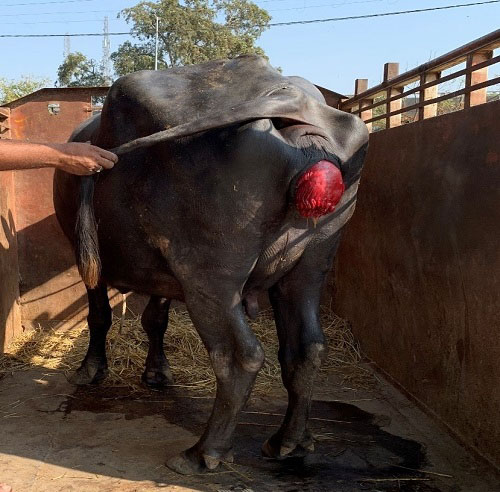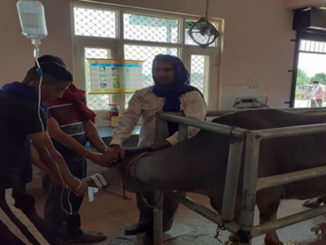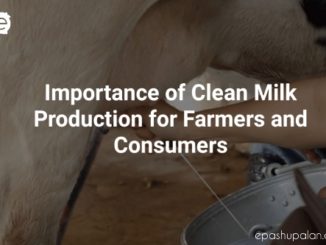Protrusion of the whole or part of vagina through the vulva is called vaginal prolapse. It occurs mostly in late gestation (last 2 to 3 months of gestation) and some times encountered after parturition.
- If the pregnant animal is on the fodder containing oestrogenic property or large amount of oestrogen hormone is being secreted by the placenta, it cause relaxation of the pelvic ligaments, vulva and vulvar sphincter muscles.
- Hypocalcaemia, Excessive deposition of fat in the perivaginal connective tissue, inadequate exercise and vaginal irritation are predisposing factor.
Based on progression, severity and prognosis vaginal prolapse can be classified into:
- First- degree Prolapse: The floor of the vagina protrudes intermittently through the vulva, usually only when the cow is lying down; but disappears when she stands up, is called first degree prolapse.
- Second- degree Prolapse: The prolapse in which the floor of vagina is in continuous prolapse even when the cow stands up is called second degree prolapse.
- Third- degree Prolapse: The prolapse in which both the cervix and almost the entire vagina remain protruded is called third-degree prolapse.
- Fourth- degree Prolapse: Second or third degree prolapse that has been exposed for a long period and necrosis and fibrosis has occurred, is called fourth degree prolapse.

Treatment
- Clean the prolapsed mass thoroughly with mild antiseptic solution.
- Administer posterior epidural anaesthesia.
- Replace the prolapse portion and retain it their place with shoe lashes suture over vulval lips.
- Systemic antibiotic, anti-inflammatory and local cleaning of the area should be done for 5 to 7 days.
General Management and Care of Post Parturient Dam
- Following parturition, the dam should be allowed to lick and nurse her young.
- Excitement, noise or any unusual happening should be avoided
- The soiled hind quarters and perineum including udder should be cleaned and dried.
- Give warm water and gruel to drink just after parturition.
- Give feed to the cow, first only bran mash moistened with luke warm water to provide laxative effect. Some green grass may also be given.
- The placenta is normally expelled within 2-4 hours. If it is not expelled by 12 hours then give treatment for expulsion of placenta.
- The amount of grain (bran, oats, maize etc.) Should be increased gradually during the first three weeks after parturition to prevent ketosis.
- Moderate and light exercise daily should be given after parturition
- If genital discharge is purulent in nature, the animal should be treated with suitable antimicrobial agent.
- If the animal is unable to rise, further examination should be made to determine whether obturator paralysis, dislocation of the hips, spinal injuries or milk fever is/ are present
| The content of the articles are accurate and true to the best of the author’s knowledge. It is not meant to substitute for diagnosis, prognosis, treatment, prescription, or formal and individualized advice from a veterinary medical professional. Animals exhibiting signs and symptoms of distress should be seen by a veterinarian immediately. |






Be the first to comment